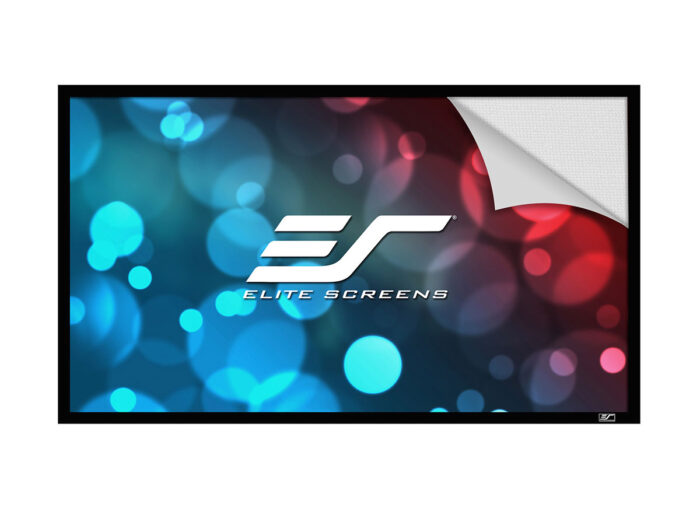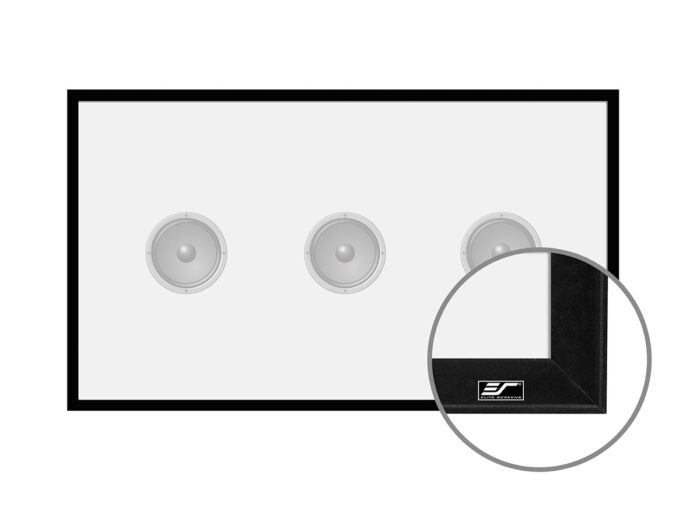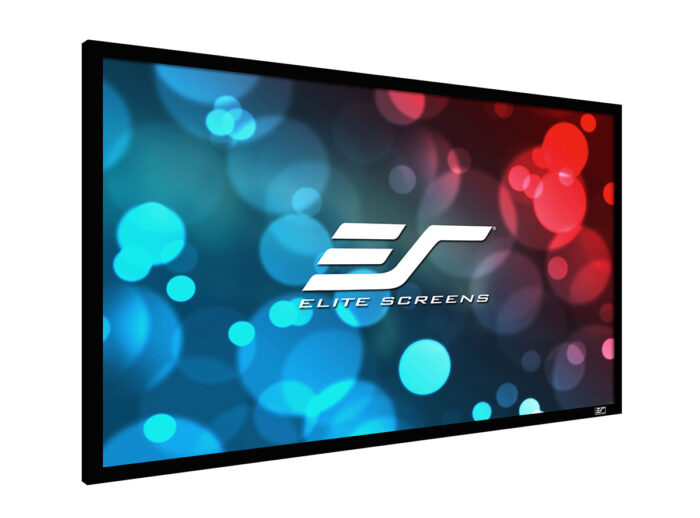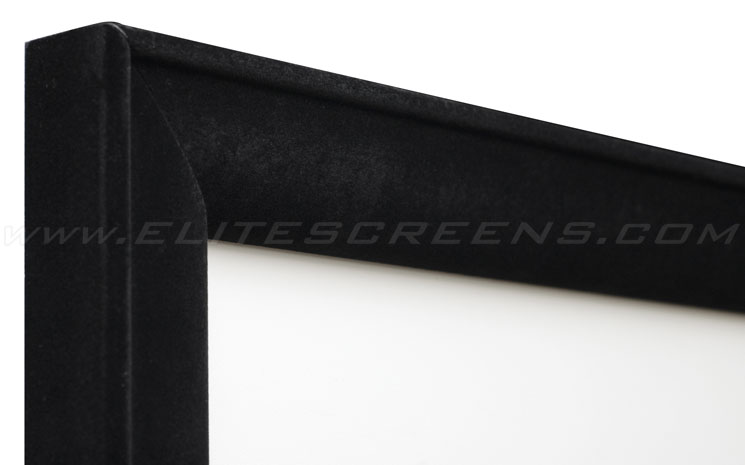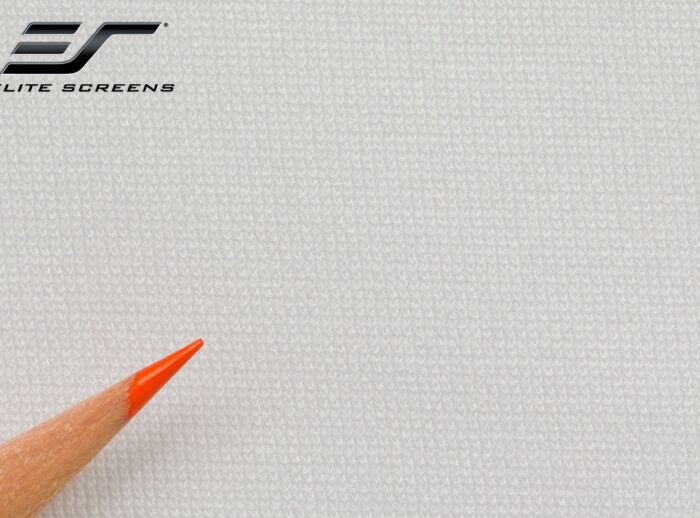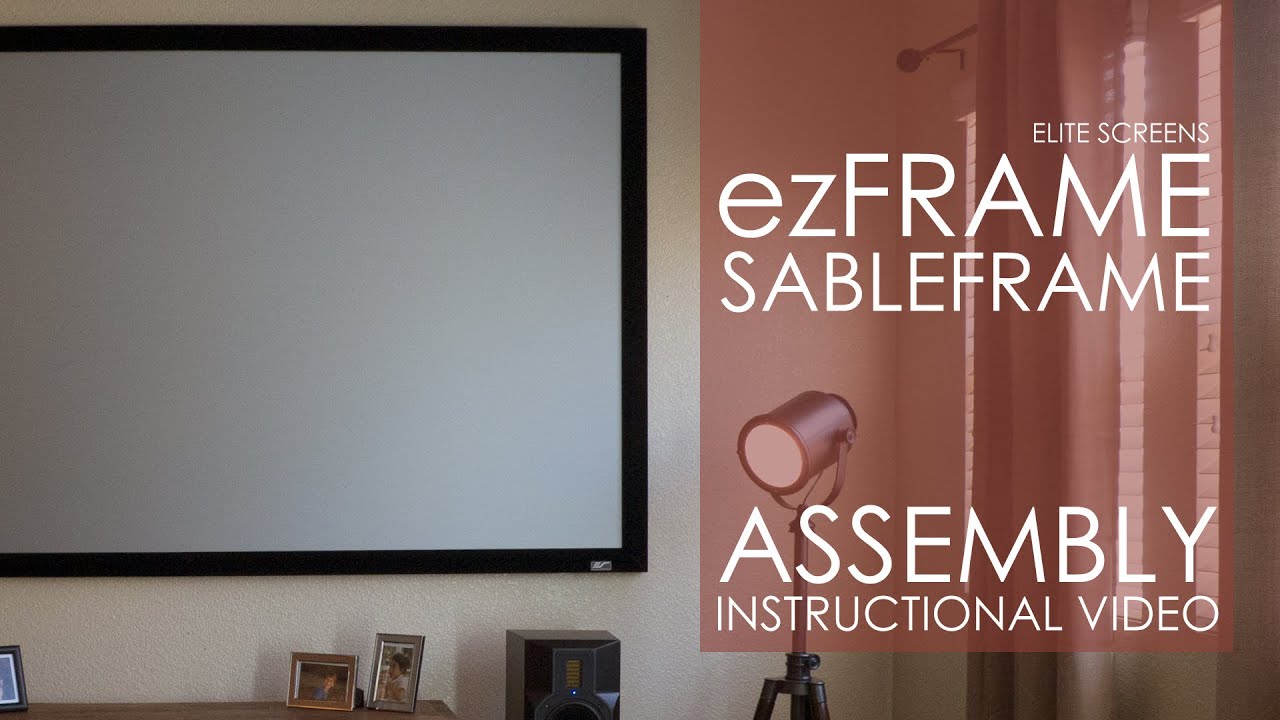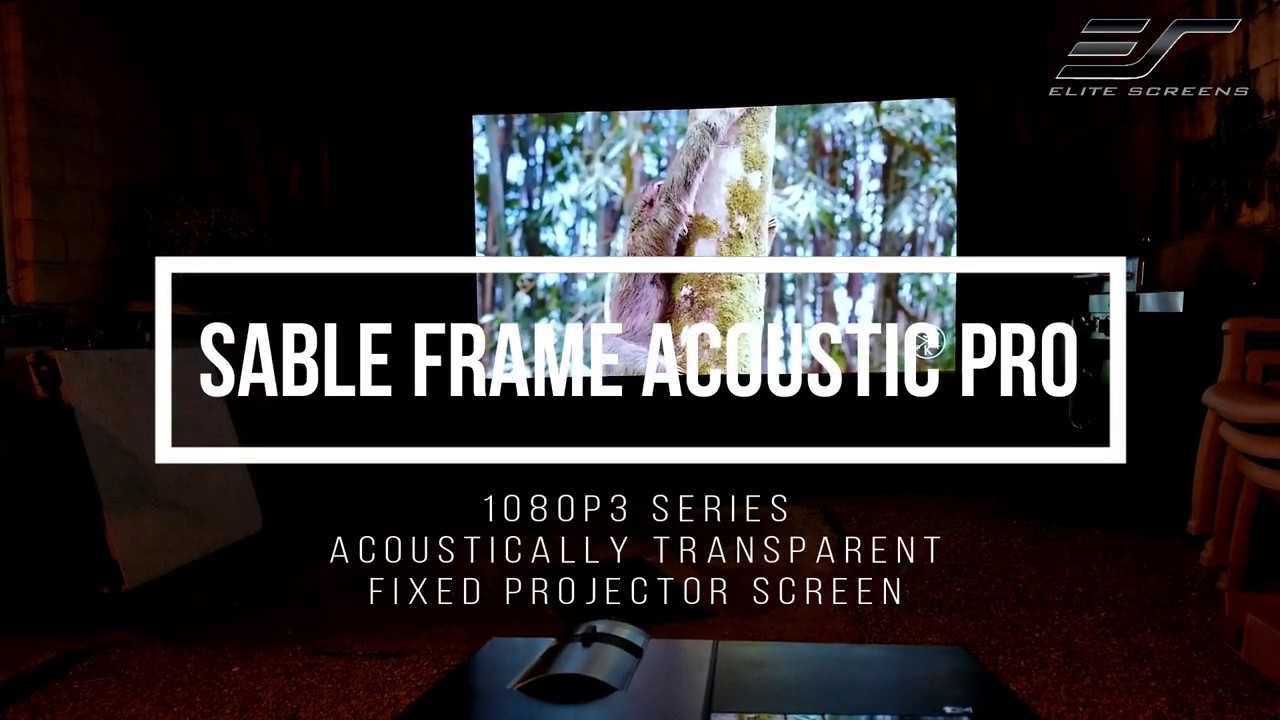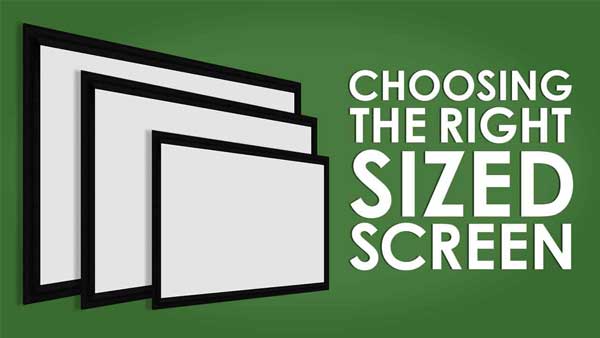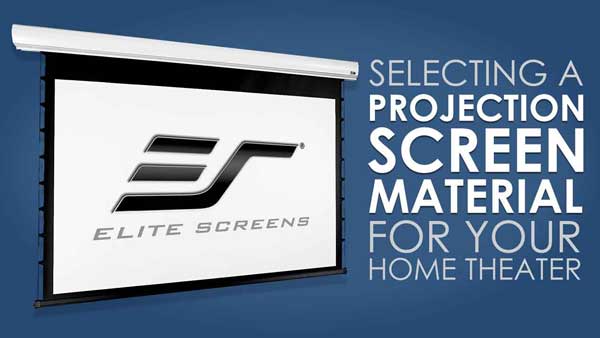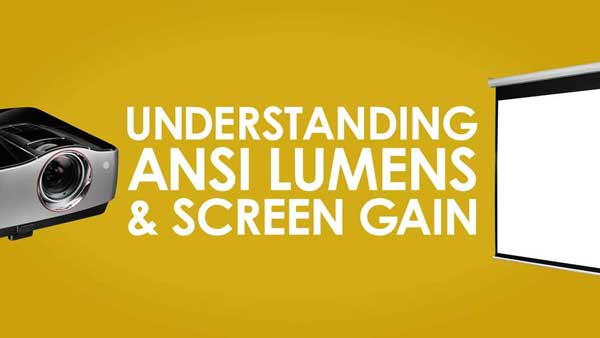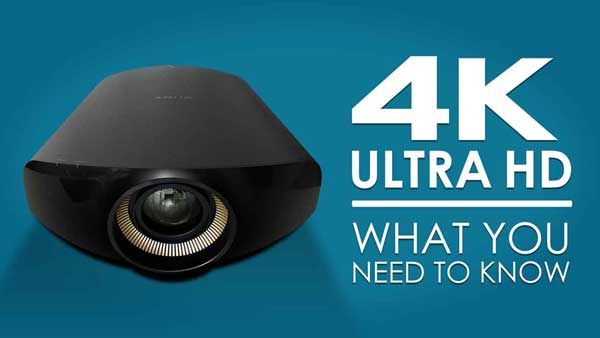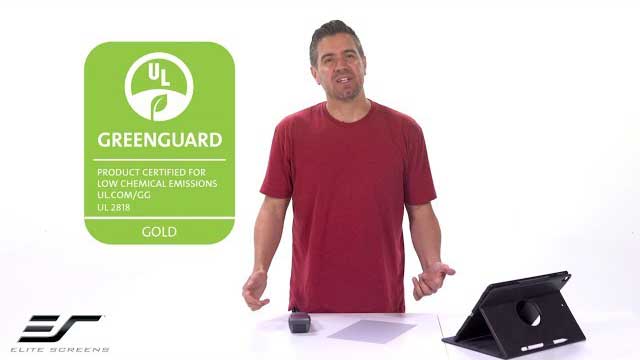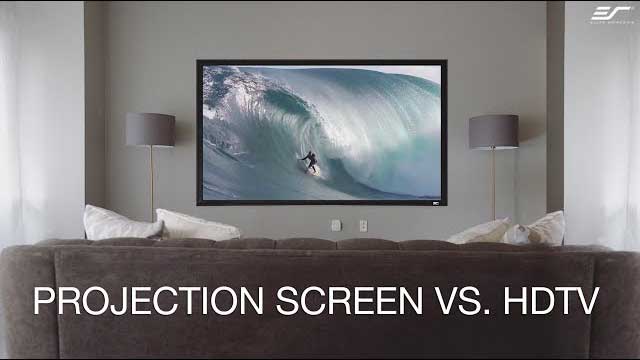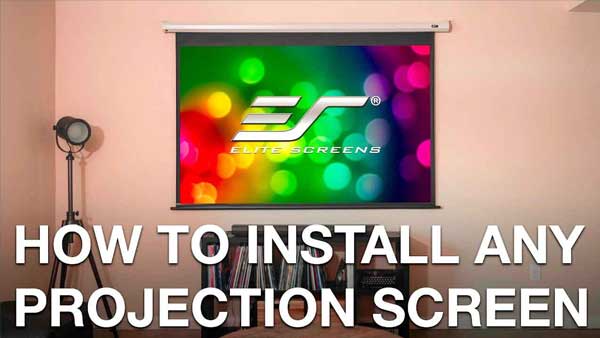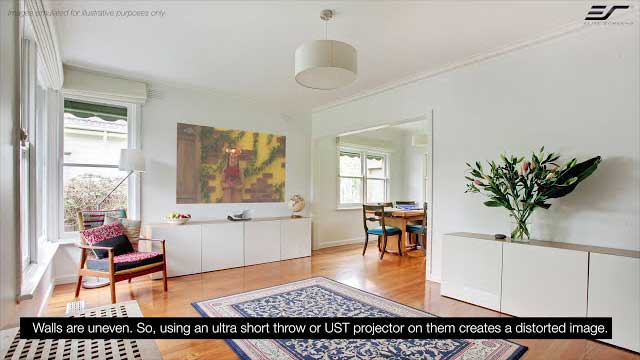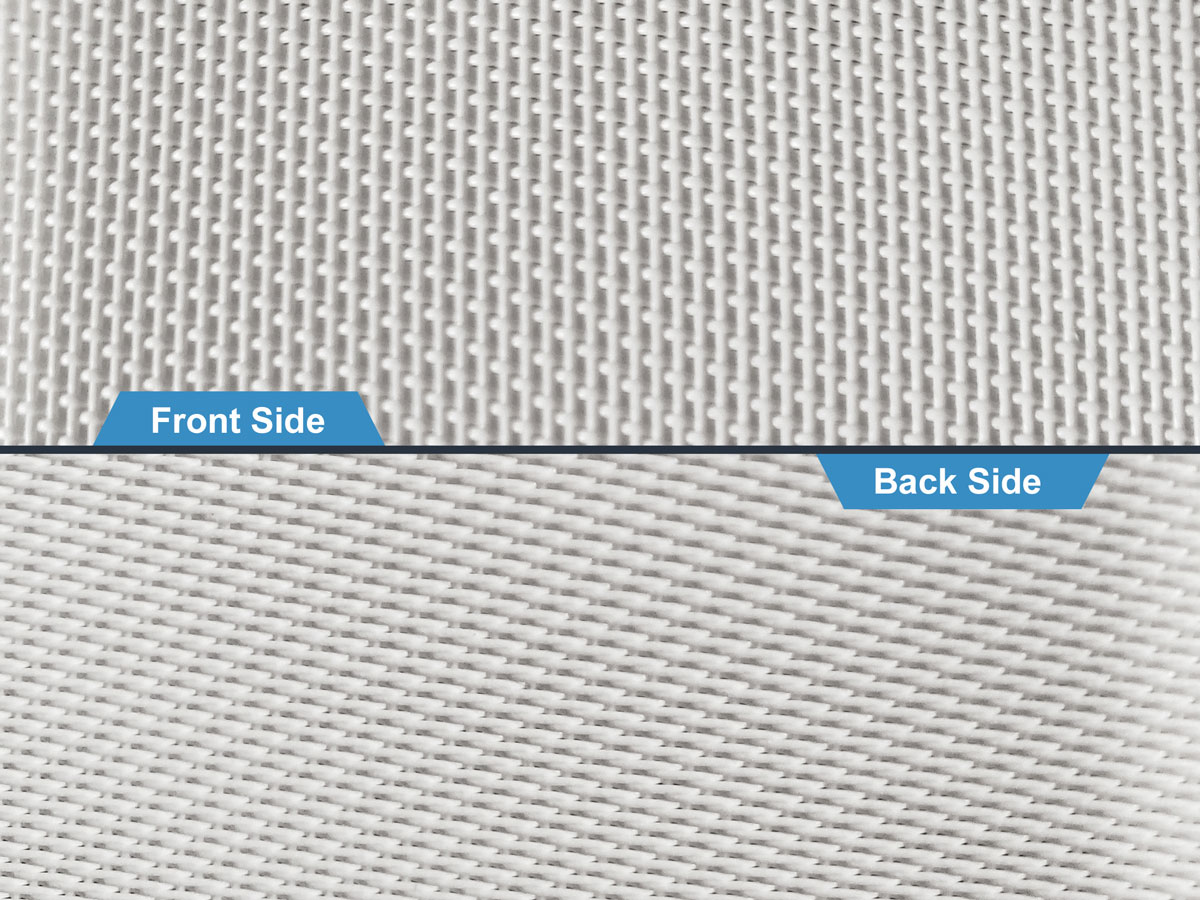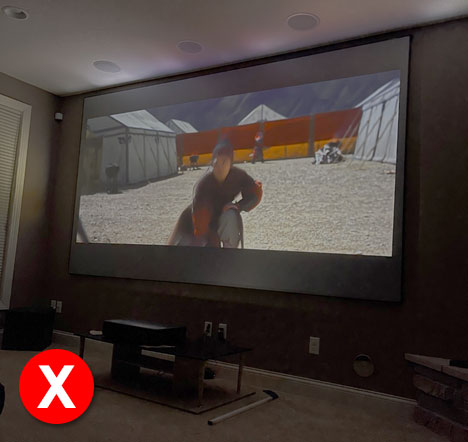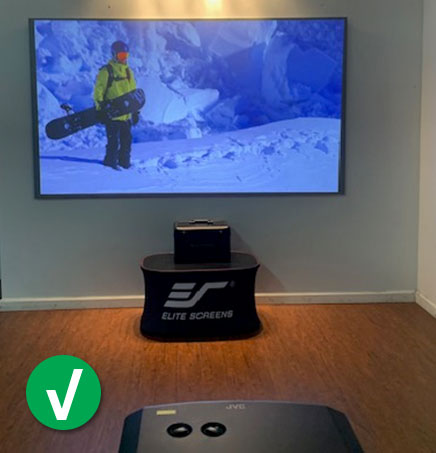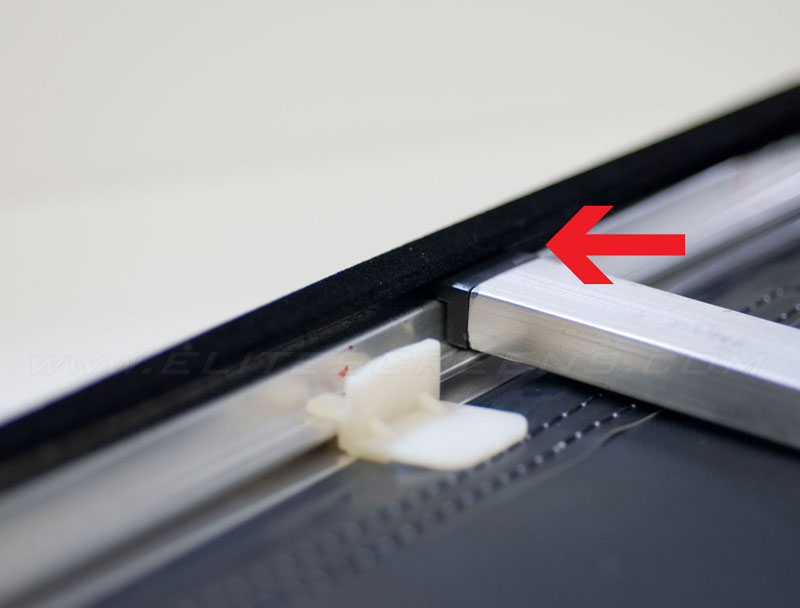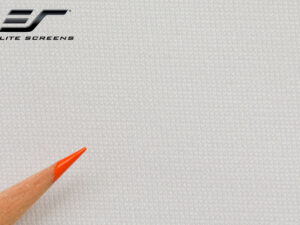Acoustically transparent Fixed Frame projection Screen
Sable Frame AcousticPro1080P3 Series
Fixed frame projector screen featuring the AcousticPro 1080P3 material. The AcousticPro 1080P3 is an acoustic transparent material that allows sound to pass through with minimal attenuation.
Available in the following front projection materials
| Material Name | Gain | Viewing Angle | Description |
| AcousticPro 1080P3 | 1.0 | 180° | AcousticPro1080P3 is an acoustically transparent front projection material. The perforated weave eliminates the moire effect while presenting warm neutral colors for today’s HD 1080P (1920×1080) and 4K UHD projectors. This material allows speaker placement behind while allowing an exceptional acoustically transparent performance. |
Screen Material
- Flat tensioned screen material
- Active 3D, 4K Ultra HD, and HDR Ready
- Standard black backed screen material eliminates light penetration
- Available in the following diagonal sizes:
- 100″ in 16:9 format
- 96″ and 166″ in 2.35:1 format
Design and Installation
- Home Theater fixed frame screen is designed for today’s 720P, 1080P and 4K Home Cinema projectors
- Black velvet surfaced covered 2.36″ aluminum frame enhances overall appearance and absorbs projector light overshoot
- Easy to assemble and install in minutes
- Adjustable fix plates provide equal tension over the entire projection surface
- Sliding wall brackets allow screen to slide horizontally for properly centered installation.
- Installation kit includes: sliding wall brackets, drywall anchors, and screws.
Quality and Reliability
- 2-year limited warranty, and 3-year warranty for ENR-G – Education, Non-profit, Religious and Government/Military organizations
- Lifetime Tech Support by Elite Screens Professional Service Team through Email, Phone or Online Form.
Dimensions Tables
User Guides
Comparison Tables
Others
2-year limited warranty, and 3-year warranty for ENR-G – Education, Non-profit, Religious and Government/Military organizations
Lifetime Tech Support by Elite Screens Professional Service Team through Email, Phone or Online Form.

